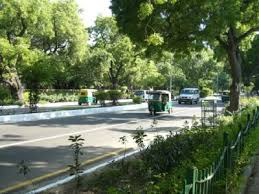Dense green cover in the city has seen a reduction of over 20% along with a 17% decline in open spaces in the Ahmedabad. However, Ahmedabad’s built up area increased by around 72% up from 81.68 sq km in 2005 to 141 sq km in 2016.
Similarly, the state capital Gandhinagar, which was once listed among the greenest city in the state and country saw a reduction of 30% in its dense tree cover while its built up area increased by 80%.
According to the data from the state forest department, the expanded city limits also saw an increase in built up of over 70%. Officials said that satellite imagery acquired by the forest department shows that green lungs have reduced in Ahmedabad and there are more scattered trees. Dense forest area means that the tree density per hectare should be more than 40%, while in open forest areas the density is between 10 per cent and 40 per cent.
In Ahmedabad city, the area under open forest increased by one square kilometre. However, according to officials, the water bodies in the city are disappearing. The city which had 10.37 sq km of water bodies in 2005 now has only 8.7 sq km.
Officials said that this data was acquired by the Gujarat Ecological Education and Research (GEER) Foundation for its study on the urban trees. GEER had taken up the project after the first urban tree count was declared in 2010. With no urban body willing to support the programme, the department is going ahead on its own and is likely to finish its report in the next couple of months.
The officials said that in Gandhinagar city, open land area fell by 23% between 2005 and 2016. “What was surprising is the area under water bodies increased from 13 to 21 sq km. Officials said that they are now examining the areas where water bodies have increased.
The officials said that in the last 11 years construction activity has increased in Bopal, Ghuma, Manipur, Shela and Ognaj in the western part of the city and toward Vatva, Nikol, in the eastern part of the city. The built up area toward Gandhinagar, that is Bhat, Motera and Koteshwar, is also growing.
Development along the west of the city is due to the large number of manufacturing industries along this corridor specially towards Sanand and the growth in east is due to the location of existing industrial estates in Vatva and Odhav.



